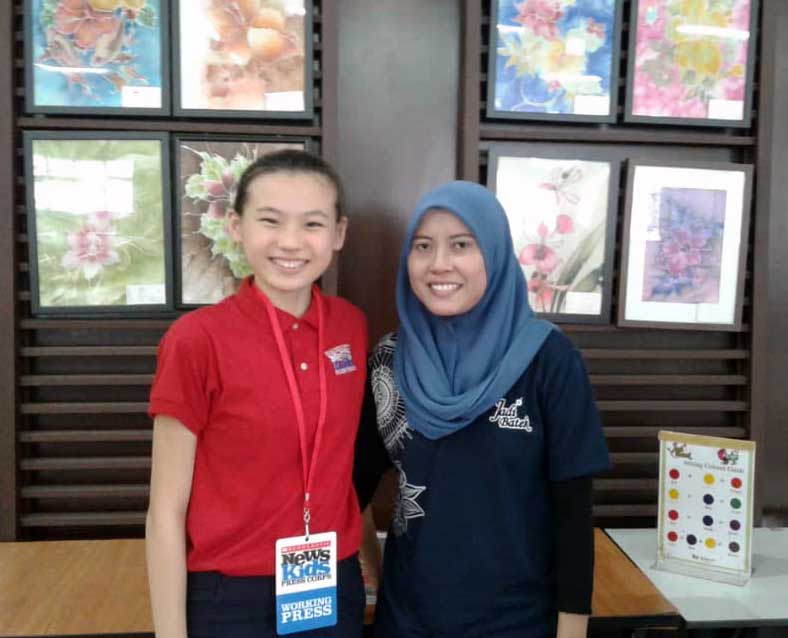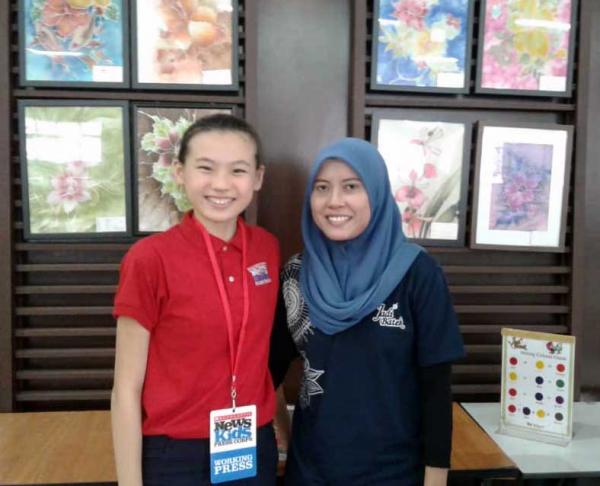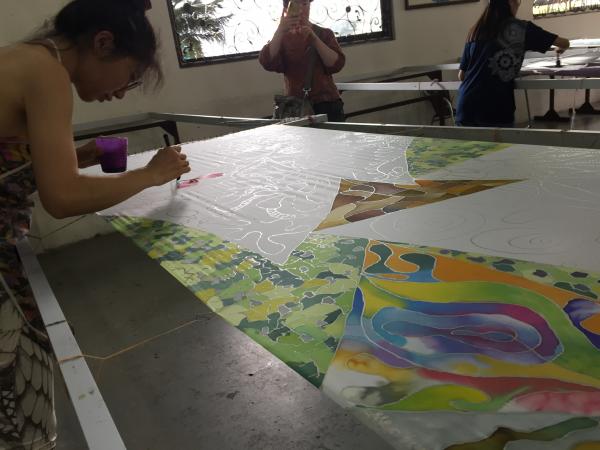KID REPORTERS’ NOTEBOOK
The Art of Batik


Zhang En with Norfariza Jumri, a batik artist at the Jadi Batek Gallery in Malaysia
“My favorite patterns to draw on batik are all sorts of flowers,” says Norfariza Jumri, an artist at the Jadi Batek Gallery. The gallery is one of the largest batik and handcrafting centers in Malaysia’s capital of Kuala Lumpur.
Batiking is thought to have originated in Indonesia, on the island of Java, probably in the sixth or seventh century. This unusual technique for coloring textiles was later adopted in the nearby country of Malaysia, starting in about the 13th century.
FLOWERS AND BUTTERLIES
I recently visited the Jadi Batek Gallery to learn more about batiking. The practice involves drawing designs on textiles and filling them in with plant-based dyes. Wax is used to prevent the dye from seeping into the blank areas of the canvas. This process can be repeated on different parts of the canvas again and again to create elaborate, multicolored patterns.
“I got started as a batik artist because I love to draw, and I really like coloring,” Jumri said. “Batik is perfect for me because it incorporates both of those things. The colors used to paint batik are amazing.”
Throughout Malaysia, one can see batik designs on pants, dresses, scarves, curtains, and even bedsheets. The most popular images are flowers and butterflies in vibrant colors. Javanese designs, by contrast, are characterized by intricate patterns in deep colors.

A student in Malaysia creates a batik textile.
MAKING MISTAKES
At the Jadi Batek Gallery, I watched as artists sketched patterns on pieces of cloth. The patterns were then outlined with hot wax to prevent the paint from running. After the paint was dry, the wax was removed by scraping it off or boiling the fabric.
“The hardest part is when you make mistakes in the drawing or coloring,” Jumri said. “Whatever you color or draw stays on the cloth, and you can’t erase it. I normally cover my mistakes by turning them into something else. That is what makes the art of batik unique.”
TRYING TO PRESERVE THE TRADITION
Batik is not as popular as it once was, so Malaysian civil servants wear it every Thursday to promote and preserve the tradition.
“Not as many Malaysians are interested in the art of batik these days,” Jumri said. “We’ll just have to keep promoting it and encouraging people to wear it.”
